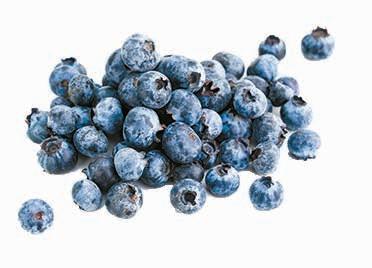
5 minute read
conscious eating
from Natural Awakenings Magazine, Broward County, Florida, May 2021
by Natural Awakenings, Broward and Palm Beach Counties, Florida
Baby Bites
Healthy Homemade Food for Tiny Tummies
Advertisement
by Sandra Yeyati
For the first year of a baby’s life, breast milk and formula are the main sources of nutrition, but as early as 4 to 6 months, a little one may be suited to try solid foods. According to the American Academy of Pediatrics, when a baby consistently holds their head up, has started to sit upright, has doubled their birth weight to a minimum of 13 pounds and exhibits an interest in food, they are ready.
Anjali Shah, a board-certified health coach and author of The Super Easy Baby Food Cookbook, is a proponent of homemade purées and soft finger foods. “A store-bought sweet potato pouch can cost $2.50, whereas one sweet potato is under a dollar, and you can get multiple meals out of it,” says Shah. “So, budget-wise, it’s a lot cheaper. It’s also healthier because you can control what’s in your baby food.”
The process is easy. “If you have a spoon and a fork, that’s a pretty good start, and if you have a blender, that’s really all you need,” says Amy Palanjian, author of Busy Little Hands: Food Play! and blogger at YummyToddlerFood.com.
A very basic technique, which both she and Shah employ, involves boiling or steaming vegetables and fruits, puréeing them with a fork or blender to the desired smoothness and freezing one-ounce portions in ice cube trays. Once frozen, the cubes can be popped out, kept in labeled freezer bags and thawed to serve.
They recommend a progression from thin, smooth purées to chunkier blends, and from very mild, single foods to progressively more adventuresome and complex flavors and textures. “Start with a really mild fruit like avocado or a really mild vegetable like carrots, green beans or sweet potato,” Shah advises. “Introduce one food every two or three days



• Safe Removal of Amalgam Fillings following IAOMT Protocol • Mercury, Fluoride, Latex-free office • Restorative/Aesthetic Dentistry • All Porcelain Crown and Bridges • Ceramic Dental Implants • • B Bo on ne e & & Tissue Grafting • Oral & IV Sedation • TMJ/TMD Disorders • Natural Facial
Rejuvenation using
PRGF and Solid
Filler Threadlift • Oral Surgery • • O Oz zo on ne e Therapy




to make sure your baby is not allergic and that it suits their digestive system.”
In addition to purées, parents can offer their babies small-cut, softened versions of foods that they can hold in their hands and gnaw, a technique called baby-led weaning. “Your baby will pick it up with their fists, stick it in their mouth and drool all over it and gum it up. It teaches them to chew very early on,” Shah explains.
“Kids need healthy fats for proper brain development,” Palanjian says, suggesting a splash of olive oil in a broccoli purée or a dab of peanut butter in oatmeal. She also favors healthy proteins like a purée made with hard-boiled egg yolk slathered on a piece of toast or a well-blended bit of salmon.
“At 7 or 8 months, you can add lentils, beans and grains, and around 9 or 10 months you can start introducing mild spices—cinnamon, cardamom, nutmeg, turmeric, cumin, coriander. For example, if you’re going to make a lentil soup for yourself, you could add a few fresh, aromatic herbs like rosemary, oregano or thyme, and then for your baby, you can mash up that same lentil soup and serve it to them. The key is to avoid the hot spices like black pepper, cayenne or chili powder,” Shah says, noting that salt should be avoided in the first year because a baby’s kidneys cannot handle it. Added sugar is also a big no-no in her book.
“The best way to feel like you’re feeding your baby safe food is to serve a variety of foods over the course of a week,” Palanjian says. “But most of all, learn to enjoy this phase of your baby’s life. It can be a fun milestone. Let them explore. Trust them if they turn their face, close their mouth or push the spoon away. There’s no reason you need to force another bite. Let them show you and be in charge of what goes into their mouth. That can be a great way to set the foundation for intuitive eating. We want them as adults to be able to say when they’re hungry and when they’re full, and we often have the tendency to try to override that in our kids. So, if you let that develop as it very clearly does and is present from birth, that can be a great thing to do with little ones.”

Easy DIY Baby Food Recipes
Baby Blueberry Smoothie
viktor/AdobeStock.com 1 cup frozen wild blueberries 1 pear, cored ½ banana, peeled 1 cup baby spinach ¼ to ½ cup water Put all of the ingredients in a large pot. Bring to a boil, reduce to simmer until soft. Once soft, purée in a blender, adding additional water if needed for a thinner purée. Transfer to ice cube trays and freeze for up to four months.
Baby Superfood Purée
16 oz fresh or frozen broccoli 16 oz fresh or frozen cauliflower 4 cups baby spinach ¼ to ½ cup water
Put all of the ingredients in a large pot. Bring to a boil, reduce to simmer until soft. Once soft, purée in a blender, adding additional water if needed for a thinner purée. Transfer to ice cube trays and freeze for up to four months.
Recipes courtesy of Anjali Shah. For more information, visit PickyEaterBlog.com.
Sandra Yeyati, J.D., is a professional writer. Reach her at SandraYeyati@ gmail.com. Natural Awakenings recommends using organic, non-GMO (genetically modified) and non-bromated ingredients whenever possible.







